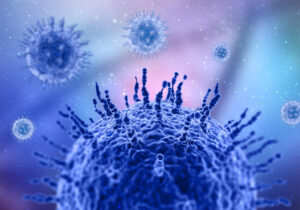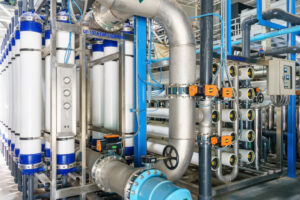Water, an indispensable element for life, serves various purposes, including drinking, cooking, and bathing. However, both municipal and private water sources can harbor contaminants that are often invisible but potentially harmful. As such, clear water does not mean it is clean — and it is important for us to know what contaminants may be present, even in the clearest water you see.
There are three types of biological contaminants: bacteria, viruses, and protozoan cysts. It is important to know the threats they posses and how to safeguard our community against them.
1) Bacteria as one of Biological Contaminants
Biological contaminants, collectively termed waterborne pathogens, can infiltrate water supplies through animal activities, agricultural runoff, sewage leaks, or natural disasters. Despite being microscopic, these contaminants pose serious health risks if ingested. Bacterias that are prevalent in water such as Vibrio cholera, Salmonella, and E. coli, can affect vulnerable populations by causing symptoms like nausea, diarrhea, and, in severe cases, hospitalization or death.

2) Viral Contaminant
Viruses, even smaller than bacteria, can cause diseases like Hepatitis A, Rotavirus, and Norovirus. Their size poses challenges for typical filtration systems, making reverse osmosis or submicron filters necessary for effective removal. Furthermore, viral contamination, which can lead to nausea and gastrointestinal issues, may also result in severe infections affecting the internal organs.

3) Protozoan cysts
Protozoan cysts, though less common, present a significant health threat. Protected by a hard protein shell, parasites like Giardia and Toxoplasma, when ingested through contaminated water, can cause symptoms such as diarrhea, weight loss, and dehydration. It is not surprising that protozoan infections require powerful antibiotics for treatment.
So, how to safeguard our water consumption from the hazardous contaminants?
It is relieving that various water treatment methods exist to protect against these waterborne pathogens. The methods include boiling, ultraviolet sterilization, and filtration. The use of reverse osmosis water filtration system is also recommended due to their high effectiveness in removing over 99% of contaminants, including bacteria, viruses, protozoan cysts, heavy metals, minerals, pesticides, and more. These systems, applicable to both municipal and private well water sources, operate through a mechanical process where water is pressured through a semipermeable filter membrane with tiny pores that trap contaminants.

Installed between the water supply and faucets, reverse osmosis systems process substantial amounts of water daily and often include multiple stages for enhanced purification. By investing in a reverse osmosis water filtration system, individuals can mitigate the risks associated with waterborne biological contaminants, ensuring clean and safe water for themselves and their families.
Reference(s):
https://aquasureusa.com/blogs/water-guide/biological-contaminants-in-water-what-they-are-and-how-to-protect-yourself
https://quenchwater.com/blog/how-to-tell-if-water-is-clean/





